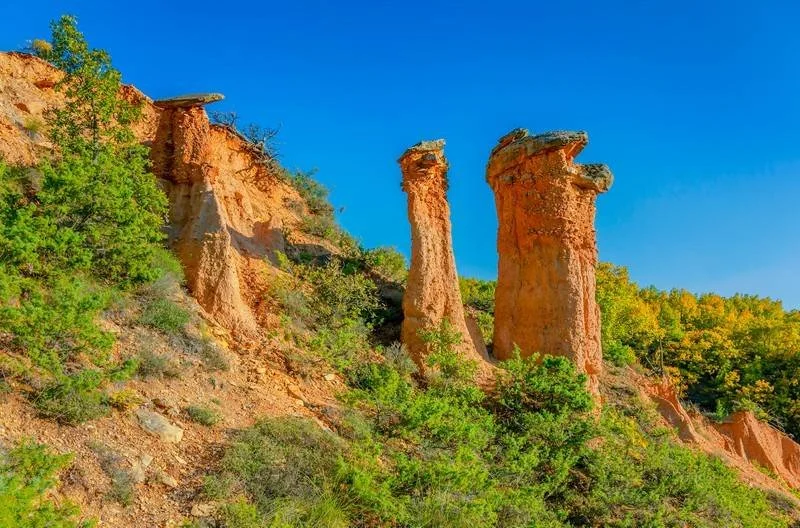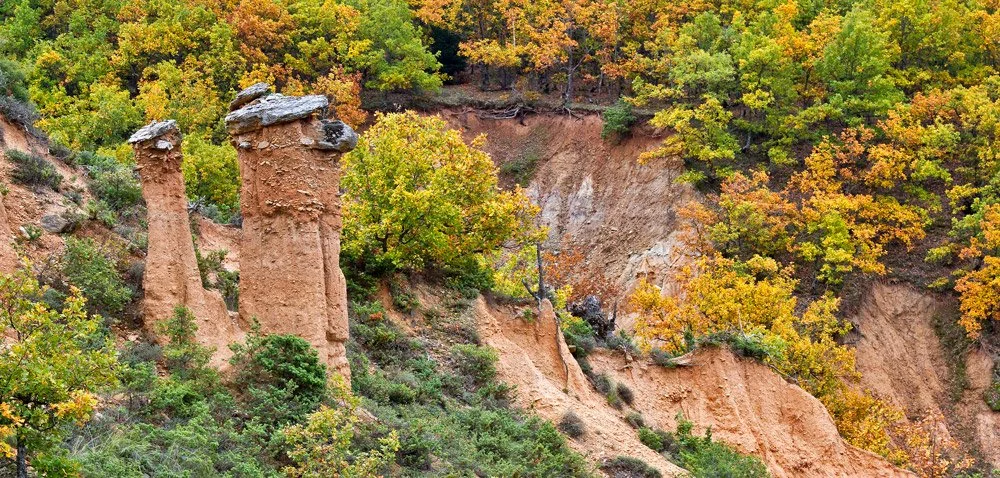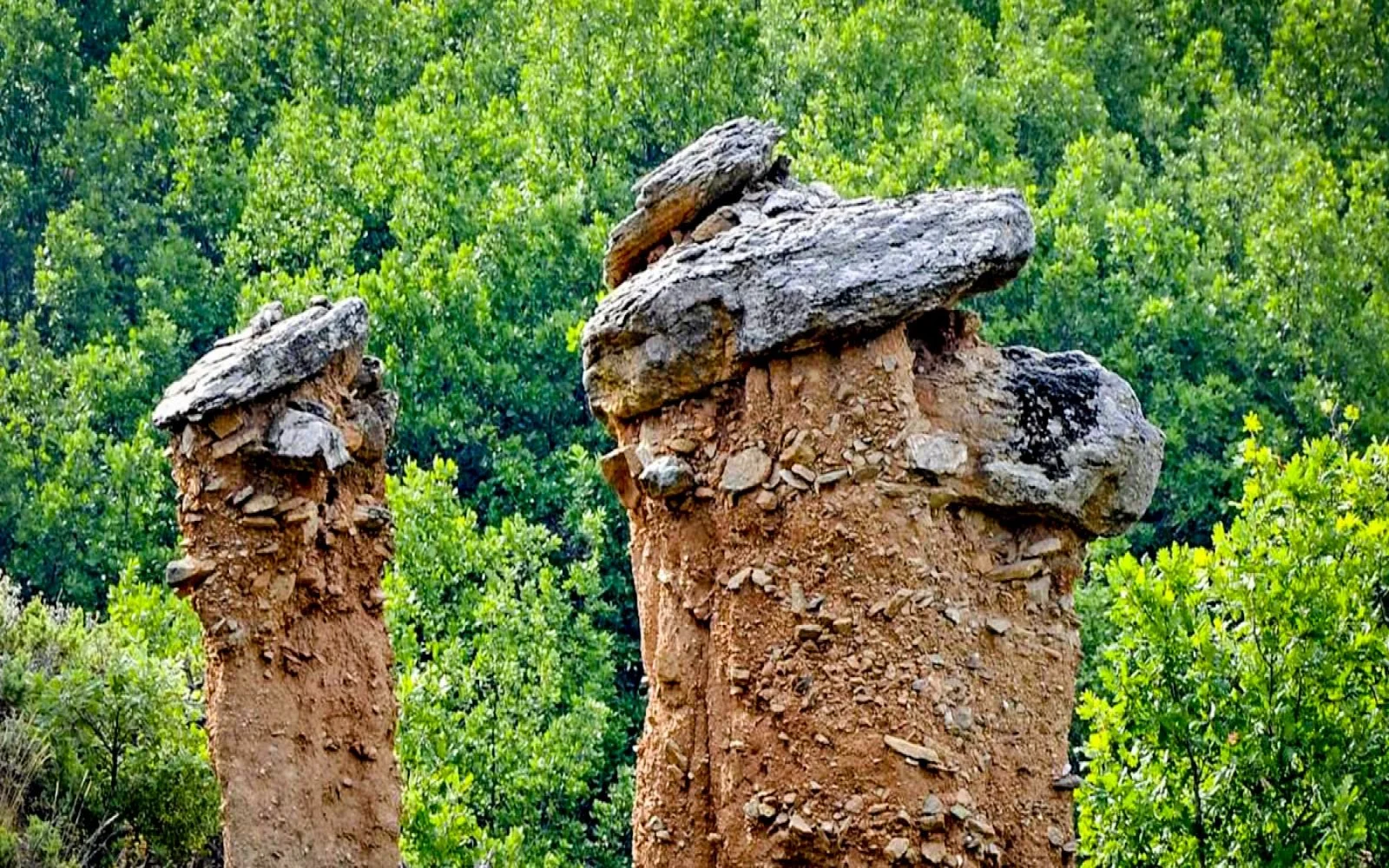The "Boucharia" have been formed by soil erosion over a span of 70,000 years.
The "Boucharia" are natural geological formations that create a unique and breathtaking phenomenon, found nowhere else in Greece. They generate an almost surreal atmosphere in a corner of the Kozani-Grevena Geopark.
Located near the village of Mikrovato in the municipality of Servia-Velvento (formerly the Municipality of Kambounia), the formations are about 40 kilometers south of Kozani.
The "Boucharia" were shaped through the erosion of the region's rocks over the course of 70,000 years, creating impressive columns that resemble chimneys. These earthen pillars are made of sand, pebbles, marls, and clay, with their tops covered by slate slabs, reaching heights of up to 7 meters.
The likely binding materials for the formations are iron oxides and silicon dioxide. The word "bouchari" may derive from the Persian word "bakhari," which means chimney.
Approximately one kilometer from the "Boucharia," and along a lush path, the "Nochtaria" rise majestically. These formations are similar cone-shaped peaks with sharp ridges, resembling small pyramids but without the slate cap, reaching heights of over 10 meters. The "Nochtaria" stretch along the Potamia stream, bordering the area of Livadero, evoking a miniature version of Cappadocia.
To facilitate access to the area, a designated path has been created. The development of this area is helping to foster educational activities and alternative forms of tourism, such as geotourism.














